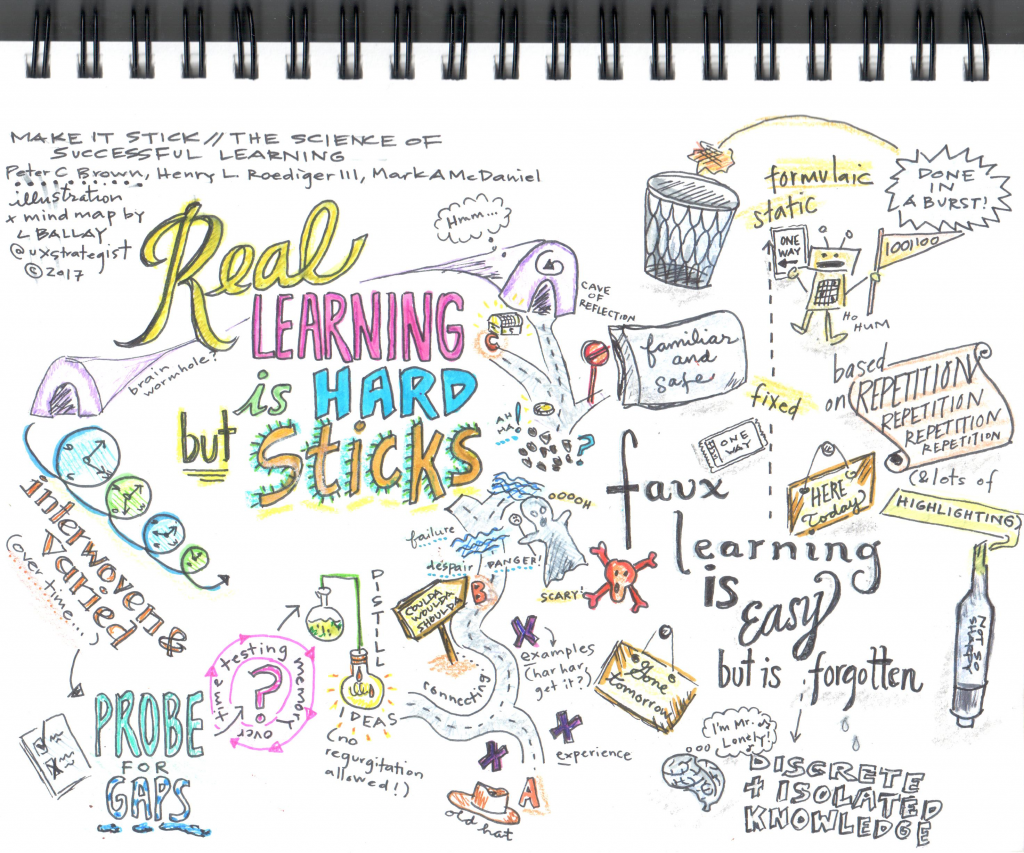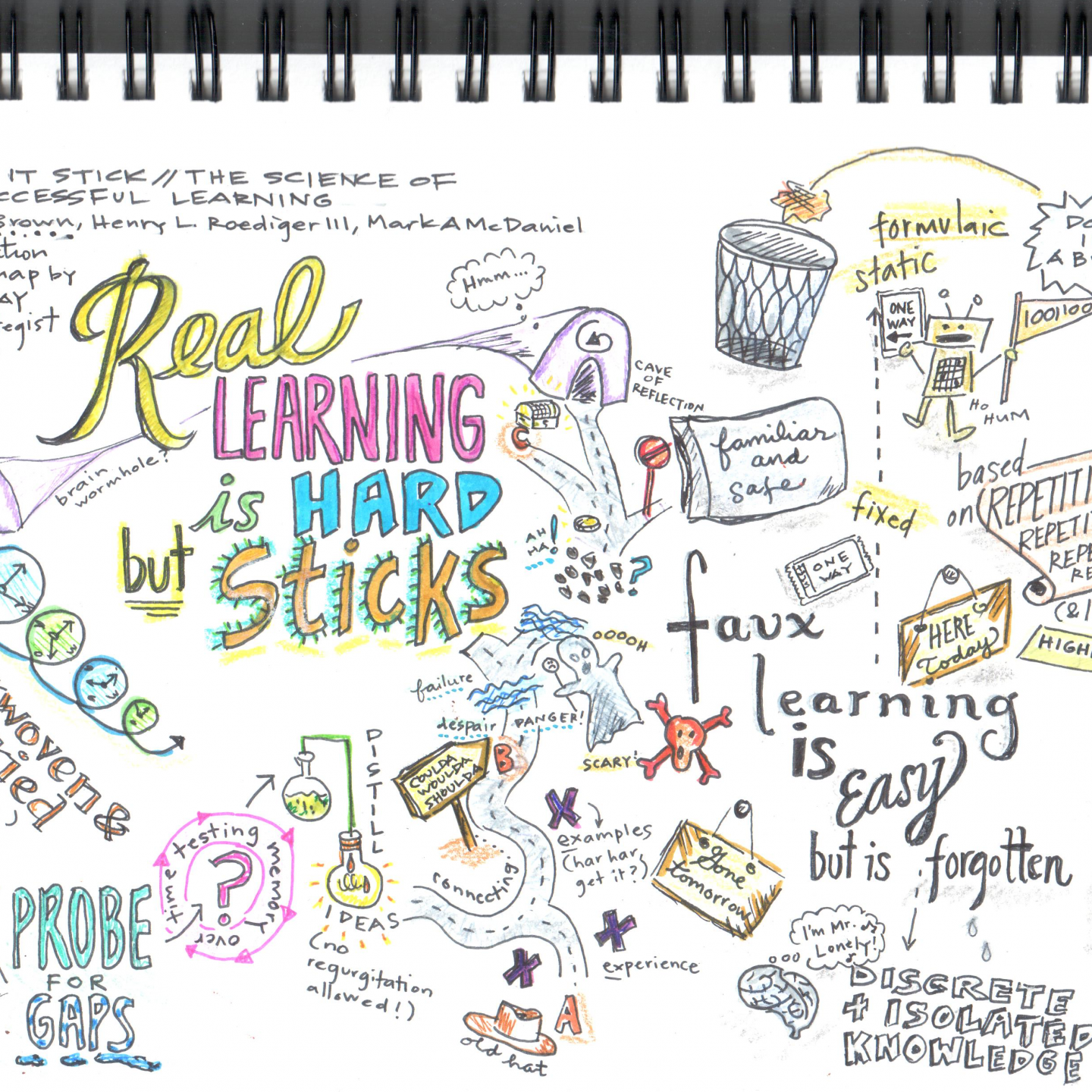Key Concepts extracted from Make it Stick: The Science of Successful Learning by Peter C Brown, Henry L Roediger III, Mark A McDaniel.
Hoping that a mindmap combined with noting down key ideas will help cement this in my brain…

How to learn better:
Quiz yourself – strengthen retrieval:
(Lock and load it. These practices help lock knowledge into your long-term memory.)
- Convert the main learning points into questions and try to answer them
- Identify what you are retaining vs. not retaining by testing your memory over time (<–the over time is important!)
- Seek out those memory gaps so you focus on the weak areas that require more work
Make reflection a habit – strengthen generation:
(Coulda, woulda, shoulda. This helps you incrementally improve and leads to mastery.)
- “Write to learn” –Write a brief summary of what you’ve learned in your own words and relate it other relevant examples
- Write summaries of what worked and didn’t work
- Visualize and mentally rehearse what you would do differently next time
- Consider different ways of handling it the next time to get better results
Connect new knowledge to old knowledge – strengthen elaboration:
(Old meet new. This helps you retrieve and build upon your foundation.)
- Retrieve your earlier learning concepts and link it to new concepts
- Think of relevant, personal examples that illustrate concepts you have just learned
How to teach better:
Foster generative learning:
(Solve and deconstruct. This leads to stronger retention.)
- Have students come up with their own answers or solutions through trial and error before presenting the “right” way/feedback.
- Have students identify and articulate the underlying principles or “rules” that govern the concepts that are being taught. This helps them better apply these concepts to new, unfamiliar situations.
Build mistakes into the process:
(Embrace failure. Learning from errors leads to greater resilience.)
- Allow students to make errors and experience setbacks as part of the lesson plan and learning objectives.
- Create a mindset that mistakes are a necessary part of the path to mastery.
Flipping the class:
(Lose the lengthy lectures. New material permeates better when it’s repeated, spaced over time and presented in myriads of ways.)
- Introduce material as a media to be consumed prior to class.
- Intersperse class with quick “tests” that allow students to grapple with the material as they are learning it.
Peer Learning:
(Topple lecturn authority. Debate and discussion among peers helps with clarity and build conceptual understanding.)
- Have students work in small groups to tackle the in-class “tests” and discuss/share their answers.
- Pair students who have different answers so they can articulate their thoughts and practice persuasion.
(see also: Learning Model by Eric Mazur)
Humans kinda suck at:
- Recognizing their own mastery vs. weaknesses
- Trying something new. Even if data shows that there’s a superior way to learn, they often will still persist with what they know.
- Choosing the best study methods. We favor those that give us a false sense of mastery–like reading the same material over and over again to “study” it or taking lengthy, detailed notes from a lecture.
- Mixing up the methods in which we learn. We tend to have one “go to” method rather than interleaved methods.
- Handling fragmentation. We create stories to fill in our discomfort with ambiguity, randomness and any missing pieces of information.
- Being objective. We tend to apply our subjective experience to everything including decision-making. (see also: Thinking Fast and Slow by Daniel Kahneman)
- Teaching something you have deep expertise in. Experts cluster underlying principles whereas novices cannot yet see these principles. This makes it hard for novices to understand what is being taught and the connections.

